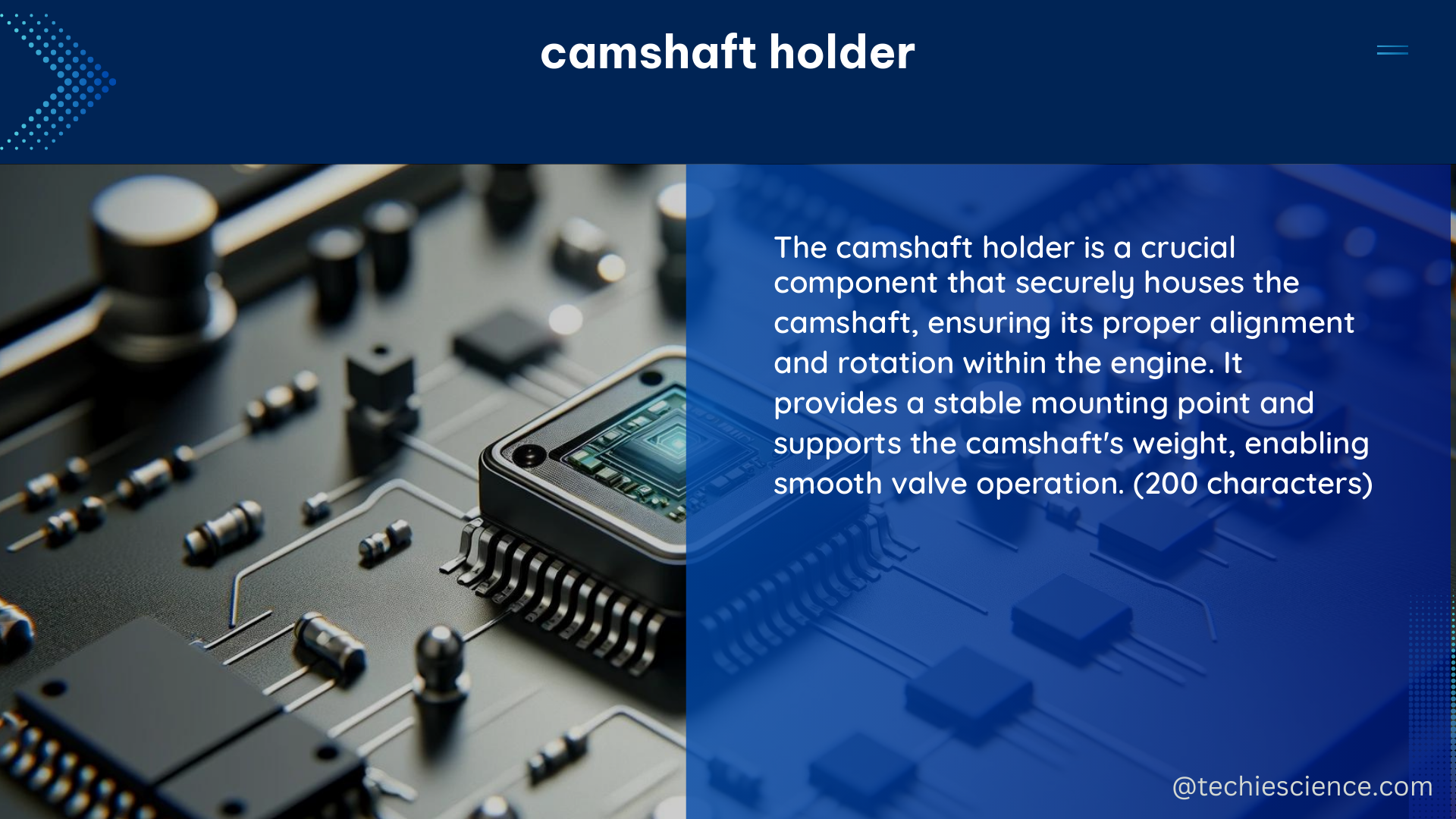Camshaft holders, also known as camshaft bearings, are critical components in internal combustion engines that provide support and housing for the camshaft. These intricate parts are designed to withstand the high loads and speeds generated by the camshaft’s rotation, ensuring the smooth and efficient operation of the engine. In this comprehensive guide, we will delve into the technical specifications of camshaft holders and explore the various methods used to measure and test these crucial components.
Camshaft Holder Diameter and Length
The diameter of a camshaft holder is a crucial specification that must be precisely measured to ensure a proper fit with the camshaft journal. This measurement is typically taken using a micrometer or a dial indicator, and the diameter should match the diameter of the camshaft journal to minimize wear and maintain optimal performance.
The length of the camshaft holder is also an important consideration, as it affects the overall length of the camshaft and the clearance between the holder and the cylinder block. The length of the camshaft holder should be within the manufacturer’s specified tolerances to ensure proper fit and function.
Camshaft Holder Material

The material used in the construction of a camshaft holder is critical, as it must be able to withstand the high temperatures and loads generated by the engine. Cast iron is a common material choice due to its excellent wear resistance and damping properties, while steel is often used in high-performance applications due to its higher strength and stiffness.
Oil Holes in Camshaft Holders
The number and size of the oil holes in the camshaft holder are essential for the proper lubrication of the camshaft and its bearings. These oil holes should be properly aligned with the oil passages in the cylinder block to ensure adequate lubrication and minimize wear.
Measuring and Testing Camshaft Holders
In addition to the technical specifications, there are several methods used to measure and test camshaft holders to ensure their proper function and longevity. These methods include:
Ridge Height Measurement
The ridge height of the camshaft journal can be measured using a micrometer or dial indicator. The ridge height should be within the manufacturer’s specified tolerances to ensure proper fit and minimize wear.
Main Bearing Pin Measurement
The outer diameter of the main bearing journals can be measured using a micrometer or dial indicator. The measurements should match the minimum values specified by the manufacturer to ensure proper fit and minimize wear.
Camshaft Curvature Measurement
The camshaft curvature can be measured using a dial indicator to ensure that it is within the manufacturer’s specified tolerances. The curvature must be less than 0.02 mm on certain engines and should not exceed 0.1 mm.
Axial Bearing Clearance Measurement
The axial bearing clearance can be measured using a dial indicator to ensure that it is within the manufacturer’s specified tolerances. The axial play of the camshaft should be between 0.090 and 0.150 mm in most cases.
Camshaft Sprocket Stroke Measurement
The camshaft sprocket stroke can be measured using a dial indicator to ensure that it is within the manufacturer’s specified tolerances. The stroke of the sprocket should not exceed 0.25 mm in most cases.
Conclusion
The technical specifications and measurement techniques discussed in this guide are essential for ensuring the proper function and longevity of camshaft holders in internal combustion engines. By understanding the critical parameters and following the recommended measurement methods, mechanics and enthusiasts can maintain the performance and reliability of their engines.
References:
- Measuring Cam Specs While Installed
- Quick Tech: Degreeing Camshaft
- Camshaft Alignment Question
- Camshaft Holder Specifications and Tolerances
- Camshaft Holder Inspection and Measurement

The lambdageeks.com Core SME Team is a group of experienced subject matter experts from diverse scientific and technical fields including Physics, Chemistry, Technology,Electronics & Electrical Engineering, Automotive, Mechanical Engineering. Our team collaborates to create high-quality, well-researched articles on a wide range of science and technology topics for the lambdageeks.com website.
All Our Senior SME are having more than 7 Years of experience in the respective fields . They are either Working Industry Professionals or assocaited With different Universities. Refer Our Authors Page to get to know About our Core SMEs.